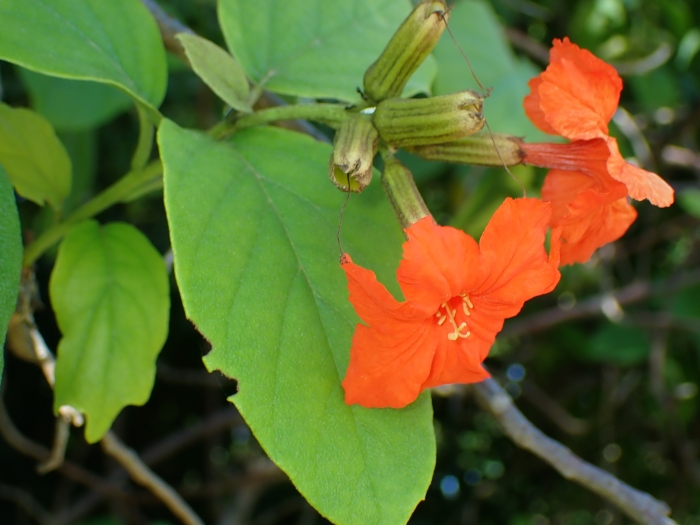Geiger Tree
(Cordia sebestena)
Geiger Tree (Cordia sebestena)
/
/

Don Loarie
CC BY 4.0
























Estimated Native Range
Summary
The Geiger tree is valued for its striking flowers and ability to withstand harsh coastal conditions, including salt spray and wind. It is often used in urban landscapes, coastal plantings, and as a specimen tree in residential gardens. This species prefers well-drained soils, thrives in full sun, and has moderate drought tolerance once established. While generally low-maintenance, it may require some cleanup due to leaf and fruit drop. It is also susceptible to pests such as scales and borers, and diseases like leaf spot may occur in humid climates. Despite these issues, its ornamental appeal and resilience make it a popular choice in suitable climates.CC BY-SA 4.0
Plant Description
- Plant Type: Shrubs, Trees
- Height: 10-30 feet
- Width: 10-15 feet
- Growth Rate: Moderate
- Flower Color: Orange
- Flowering Season: Spring, Summer
- Leaf Retention: Evergreen
Growth Requirements
- Sun: Full Sun, Part Shade
- Water: Medium, High
- Drainage: Fast, Medium
Common Uses
Bird Garden, Butterfly Garden, Deer Resistant, Drought Tolerant, Edible*Disclaimer: Easyscape's listed plant edibility is for informational use. Always verify the safety and proper identification of any plant before consumption., Low Maintenance, Salt Tolerant, Showy Flowers, Street Planting
Natural Habitat
Coastal woodlands and mangrove edges in the American tropics
Other Names
Common Names: Scarlet Cordia , Sebesten Plum , Cereza Amarilla , Geranium Tree , Largeleaf Geigertree , Anacahuita
Scientific Names: Cordia sebestena , Cordia juglandifolia , Cordia laevis , Cordia sebestena var. rubra , Cordia speciosa , Lithocardium laeve , Lithocardium sebestana , Lithocardium sebestena , Sebesten sebestena , Sebesten sebestena
GBIF Accepted Name: